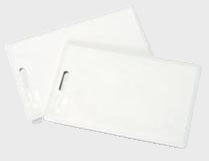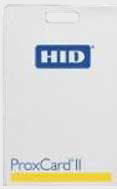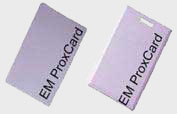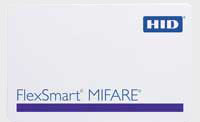Security Access Cards

Choose the card that would fit your application best. If you already have existing access with one of the card types, stick with it.
Generally, our suggestions are regional, with HID favored in the US, EM favored in Asia and MIfare in Europe.
If you are still unsure, please contact us by one of the methods below, and we’ll help you decide which one will work best for you.
Wiegand Card

Wiegand cards use ferromagnetic wire that generates a sharp uniform voltage pulse when passed through alternating magnetic fields created by small permanent magnets. Up to 40 short lengths of specially processed wire are arranged in two rows that make up an embedded code strip on an adhesive backing, which is laminated under pressure to create a solid vinyl plastic card. Any attempt to reach the code strip destroys the card. Wiegand cards do not wear out, are virtually impossible to counterfeit, can’t be altered or copied, and are immune to external magnetic fields or RF interference.
The Mercury HMI reader consists of a sealed unit containing permanent magnets and a pickup head. The ferromagnetic wires from the Wiegand card generate pulses when the card is passed through the Mercury HMI reader, with one row representing binary 0’s, and the other representing binary 1’s. The Mercury HMI reader sends the binary data to the Mercury HMI access control panel, where it is converted to a facility code and card ID number, which is then communicated to a security system for verification with its access control database.
For pricing, please contact us by phone or email or through our Contact Us page.
HID

HID Proxcard II and EM are low frequency card standards working at 125 kHz. This low frequency makes the readers less costly, but the data content is lower. HID do a range of data formats, allowing specific site codes in addition to the card codes.
EM

EM is simpler and is more easily configurable than HID. It is a single standard, meaning that you do not get configurable site codes, and each card must be registered independently.
MIfare

MIfare technology is different than EM and HID. They are read and write cards and can store quite a bit of information. In order to house all this information, they operate at 13.56 MHz instead of 125 kHz. The MIfare unique ID is just like the EM card ID. It has no concept of site codes.
